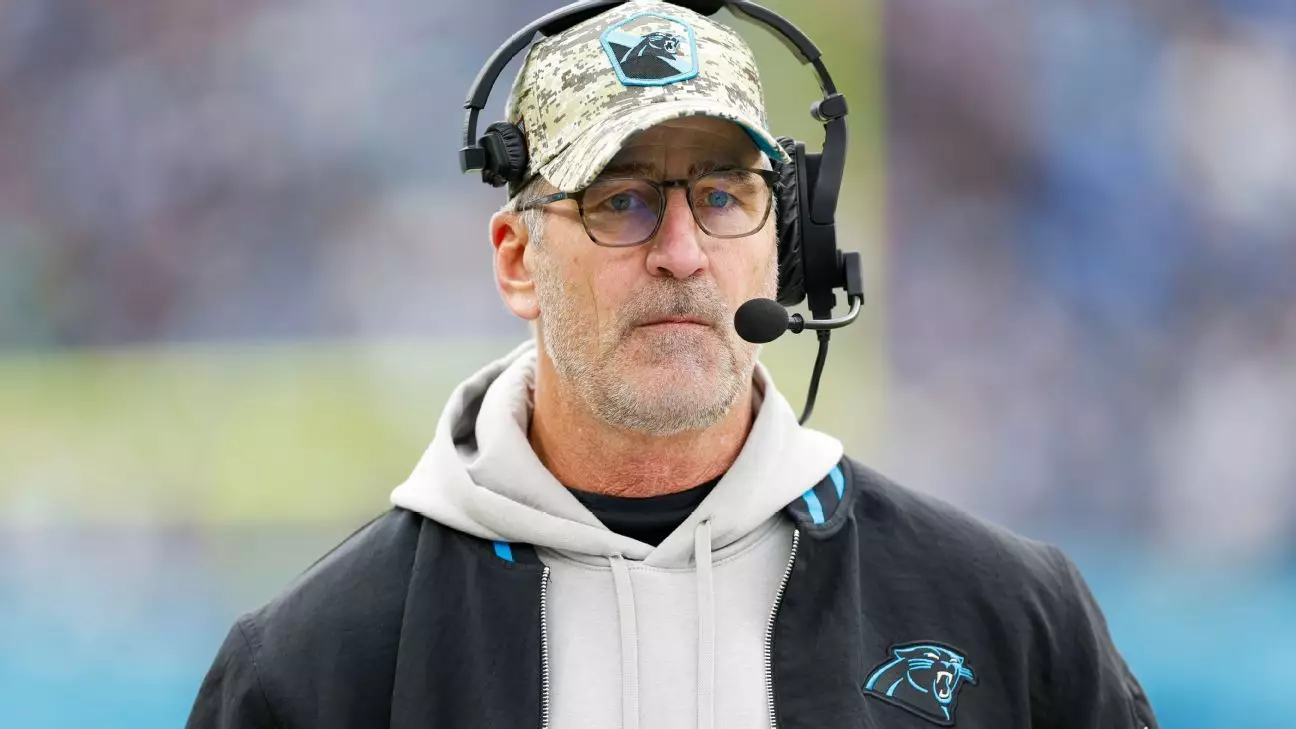The hiring of Frank Reich as Stanford’s interim head coach for the 2025 football season is undeniably a topic of fierce debate. At 63 years old, Reich is stepping in during a turbulent time—one marked by controversy and an overall decline in the program’s prestige. Troy Taylor’s firing, under accusations of bullying and misconduct, looms heavily over the university, leading one to wonder if this backup plan could actually steer the ship back on course or if it’s merely a desperate attempt to stave off a sinking vessel.
What makes this moment even more poignant is Stanford’s tarnished football legacy. Once a powerhouse that seamlessly blended academic excellence with athletic prowess, the Cardinal has seen better days. No bowl appearances since 2018 and a string of lackluster seasons, culminating in a dismal 3-9 record over the past four years, paint a bleak picture. Surely, Stanford possesses the intellectual capital to do better, and yet the reality has fallen far short of the lofty ideals associated with its name.
Reich’s Record: A Mixed Bag
Frank Reich’s previous experience in the NFL isn’t without merit; however, it’s also fraught with highs and lows. His coaching tenure has been marked by both triumph, like his contribution to Philadelphia Eagles’ Super Bowl victory, and crushing defeats, including being dismissed not once, but twice in consecutive seasons. A career record of 41-43-1 is a stark reminder of both his coaching acumen and the volatility that often accompanies it.
Promoting Reich might signal a willingness to lean into his past successes, yet the realities of coaching at a collegiate level are vastly different. NCAA football presents its own set of challenges, distinct from the professional realm where Reich has thrived (and stumbled). Will he be able to inspire young, impressionable athletes in the way he once did with seasoned professionals? Or will his NFL baggage drag the program further into disarray?
A New Direction with Old Challenges
Andrew Luck’s role as general manager provides an intriguing pivot in Stanford’s approach—the only collegiate general manager with control over coaching decisions adds a layer of complexity to an already intricate situation. As someone who has both played and understood the Stanford ethos intimately, he must navigate a delicate balance between modernizing the program and upholding its long-standing traditions.
Nate Byham’s promotion to offensive coordinator speaks volumes as well. Byham inherits an underperforming offense that hasn’t clicked, and aligning himself with Reich may prove beneficial. Yet the pressure is omnipresent. With David Bailey, one of Stanford’s most gifted athletes, entering the NCAA transfer portal, the clock is ticking for Luck and Reich to make significant changes and revive a fading program.
Culture Over Chemistry
The crux of Stanford’s conundrum devolves into cultural adaptation versus athletic chemistry. Reich’s hiring may well be viewed as a bridge to bring in a different mindset—emphasizing mentorship and personal development, qualities Reich seems to aspire to embody. However, whether he can truly implement this ethos in such a short time frame remains contentious.
Reich’s statement about embracing the responsibilities that come with mentoring student-athletes is commendable, yet it raises questions about whether he is genuinely reformational or merely the latest name on Stanford’s revolving coaching door. The challenge lies in transforming a toxic culture, one marred by allegations and a recognizably faltering program, into an uplifting and united force that students can rally around.
In a landscape dominated by the pursuit of excellence, athletics, and studies need not remain at odds. Reich’s challenge rests not solely on game-day strategies but also in rebuilding trust, cooperation, and a culture that honors both the student and athlete. It may well take more than Reich’s best efforts to earn hearts and minds in an environment still recovering from turmoil.
Thus, as the 2025 season approaches, the only certainty remains uncertainty. Stanford stands at a crossroads—will the interim leadership of Frank Reich lead to revitalization, or will it simply be another chapter in a narrative of decline? Only time will unveil the true potential of this bold experiment.

Leave a Reply